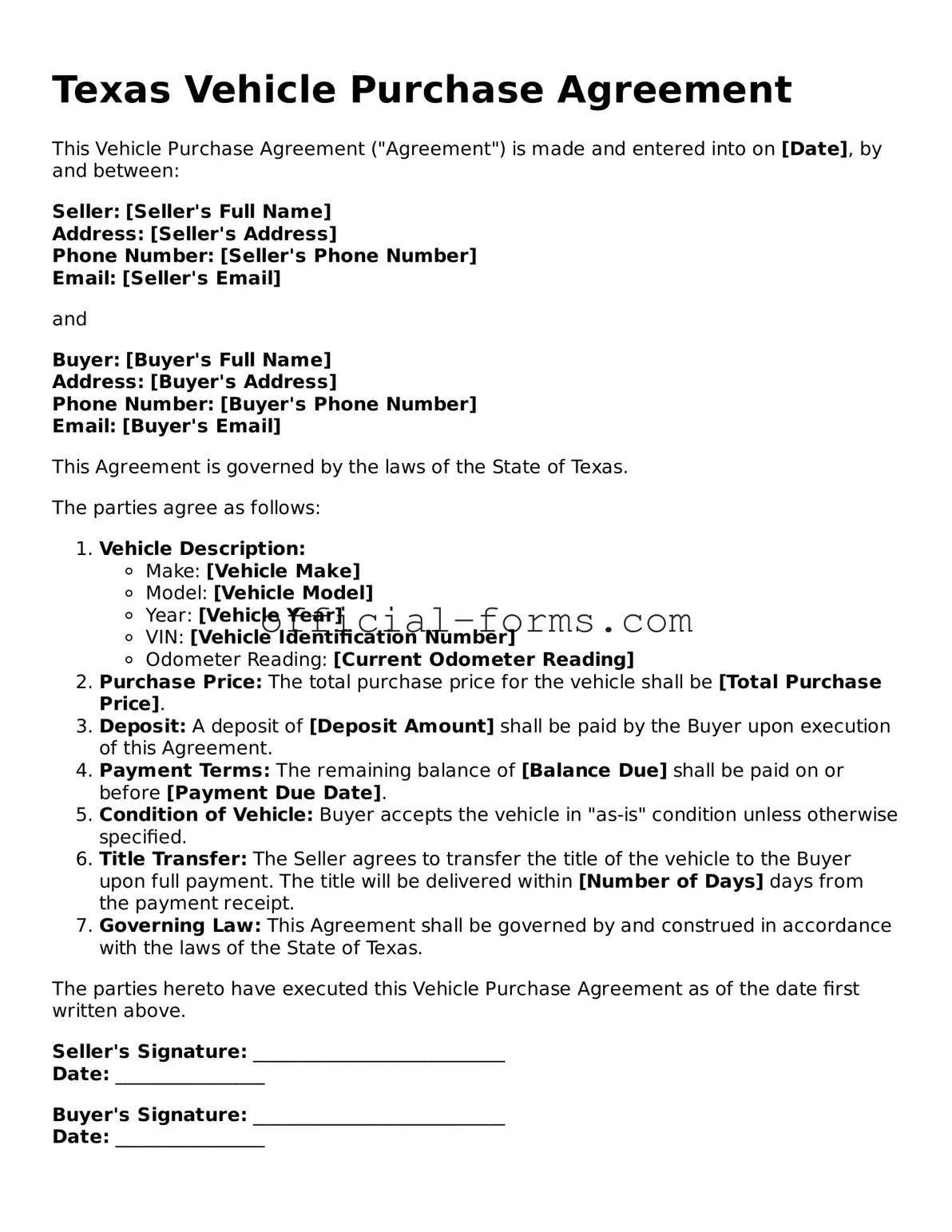Official Texas Vehicle Purchase Agreement Document
The Texas Vehicle Purchase Agreement form is a legal document that outlines the terms and conditions of a vehicle sale between a buyer and a seller in Texas. This form serves to protect both parties by clearly stating the details of the transaction, including the purchase price, vehicle description, and any warranties or conditions. Understanding this agreement is crucial for ensuring a smooth and legally sound vehicle purchase process.
Open My Vehicle Purchase Agreement Now
